01 Jun 2015
The Dangers Of Mothball Abuse
Substance use and abuse among teens and young adults often includes the huffing of inhalants. This is a practice that adults might engage in as well, but it is more common in young people because of access. Many household chemicals can be used for huffing, which is the practice of inhaling fumes to get high. Young people turn to huffing because it is an easy high. One substance in your home you might not suspect could be used in this way may be in your closet. Mothballs can be used to get high and, as silly as it sounds, the dangers are not insignificant.
What Is Mothball Abuse?
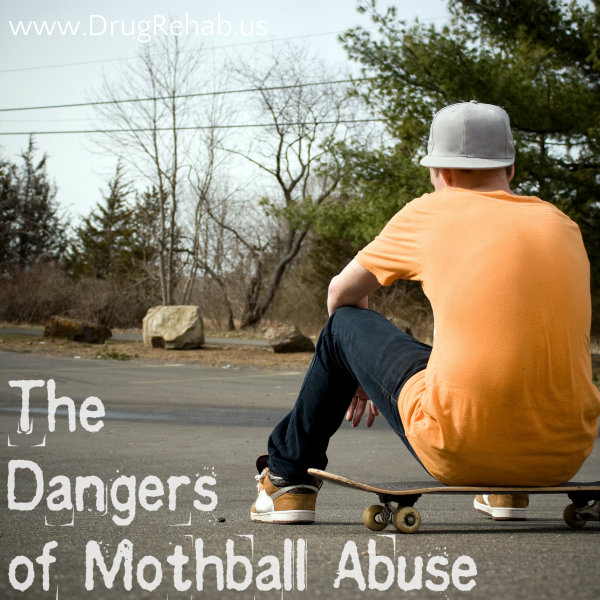 Huffing means capturing and inhaling the fumes of certain chemicals in pursuit of a high. Many products and chemicals can be used for this purpose, ranging from Freon in air conditioning units to the gases in a can of whipped cream. People who abuse mothballs typically put them in a paper bag and breathe into it for several minutes. Mothballs are traditionally made with a volatile chemical called naphthalene, but newer products use a dichlorobenzene instead, as it is less flammable. Either chemical can be huffed for a high.
Huffing means capturing and inhaling the fumes of certain chemicals in pursuit of a high. Many products and chemicals can be used for this purpose, ranging from Freon in air conditioning units to the gases in a can of whipped cream. People who abuse mothballs typically put them in a paper bag and breathe into it for several minutes. Mothballs are traditionally made with a volatile chemical called naphthalene, but newer products use a dichlorobenzene instead, as it is less flammable. Either chemical can be huffed for a high.
Mothballs And Addiction
Mothball abuse may not sound as serious as something like cocaine abuse, but inhalant abuse can be dangerous and fatal. Users can even get addicted to the high that comes with huffing. Research on addiction to mothballs, naphthalene or dichlorobenzene is limited, but we do know that inhalant use can lead to addiction. Like any drug of abuse, inhalants cause the user to get high or experience a pleasurable sensation. With time and frequent use, the brain changes in response to this high, and quitting becomes more and more difficult. Eventually the user is hooked.
Is Napthalene Addiction Dangerous For Health?
Becoming addicted to naphthalene is extremely dangerous. Even if someone doesn’t get addicted, just using this substance recreationally is risky. Both naphthalene and dichlorobenzene are harmful, toxic substances. This is why moths stay away from mothballs. When someone inhales the fumes from mothballs, he will lose coordination, develop slurred speech, become weak in the limbs, get headaches, feel nauseated and vomit. Some users may even get a scaly skin rash.
These are short-term side effects of getting high on mothballs. The long-term health effects of inhaling these substances include kidney and liver failure, anemia, convulsions, seizures and coma. Death is also possible when huffing, no matter what substance is being used. Huffing can even be fatal on the first try because the user is cutting off oxygen supply when inhaling another substance.
The dangers of abusing mothballs are numerous and serious. If you have a teenager, make sure he knows that this habit, which may seem like harmless fun, is actually quite dangerous. If you use mothballs, make sure they are locked away to prevent access. Huffing is common among teens and an issue of which all parents should be aware.
Concerned Your Teen Is Abusing Drugs?
Call An Elements Behavioral Health Counselor Now!
05 Feb 2015
Can You Safely Use Recreational Marijuana?
Recreational marijuana is now legal for adults in Washington and Colorado. The citizens of those states spoke and voted for legalization. The votes signify shifting attitudes across the country. Many people do not believe that marijuana should be kept illegal. Proponents of legal marijuana say that it is less risky than cigarettes or alcohol and that the tax revenue can help state and local governments.
Does this mean that you can use marijuana safely?
Short-Term Effects Of Marijuana
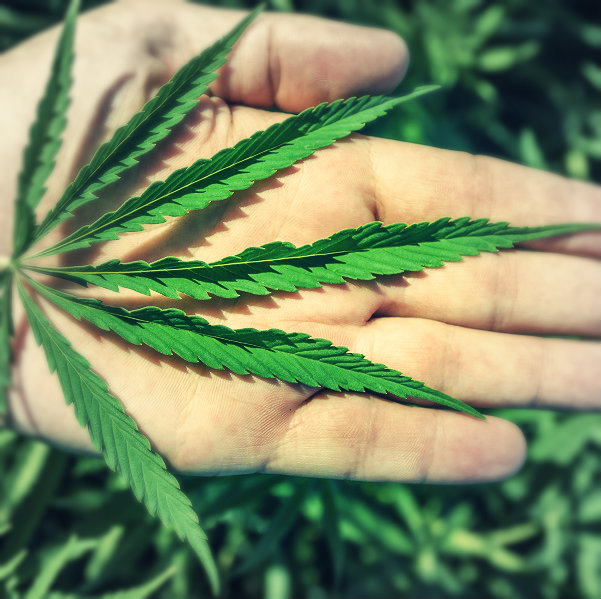 Before you decide whether or not you can safely use recreational marijuana, you should know the facts. When you smoke pot or consume the cannabis plant you are taking in a psychoactive compound called THC. This is the substance that is largely responsible for the high that accompanies pot smoking. THC acts on certain receptors in the brain to produce a number of effects: giddiness, lightheadedness, relaxation, introspection, a desire to eat, but also paranoia, irritability and disturbing thoughts.
Before you decide whether or not you can safely use recreational marijuana, you should know the facts. When you smoke pot or consume the cannabis plant you are taking in a psychoactive compound called THC. This is the substance that is largely responsible for the high that accompanies pot smoking. THC acts on certain receptors in the brain to produce a number of effects: giddiness, lightheadedness, relaxation, introspection, a desire to eat, but also paranoia, irritability and disturbing thoughts.
Using marijuana also results in an impairment of certain abilities. Your memory gets worse, as does your ability to focus and concentrate. It blunts your motor skills and your ability to operate machinery effectively. Driving a car is extremely dangerous when under the influence of marijuana.
Long-Term Effects Of Marijuana
The long-term impact of smoking pot is still being researched, but there is plenty of evidence that it can have some seriously negative effects. Most problematic is the impact on young people. If you start using marijuana as a teen you are at a much greater risk of getting addicted. You also face the risk of permanently damaging cognitive functions. Regular users who began smoking as teens see a drop of as much as eight IQ points into adulthood.
Even casual users of marijuana experience permanent changes in the brain. These include changes to the parts of the brain that govern motivation, addiction and emotion. And of course, there are health problems associated with smoking, which include respiratory illnesses and potentially the development of lung cancer with frequent and regular use.
Marijuana Is Addictive
Proponents of marijuana use will argue that the drug is not addictive, but research says otherwise. It is less addictive than nicotine, alcohol and heroin, but it is habit forming. In fact, nine percent of people who ever use the drug will become dependent on it. The risk is especially high for young people. For users who first started smoking as a teen, there is a much greater chance of getting hooked than for an adult using the drug for the first time.
Adults using pot run the risk of becoming addicted too. The greatest risk comes with using it regularly and frequently. Unlike harder drugs, addiction to pot is not sudden. It comes on more slowly, but can be just as devastating. 18 percent of people seeking drug addiction treatment in the U.S. are addicted to marijuana. Withdrawal symptoms that make it difficult to quit include insomnia, cravings, anxiety and irritability.
If you have been wondering about recreational marijuana and whether it can truly be safe for a responsible adult, make sure you get all the facts. No drug is ever safe. Marijuana may carry fewer risks than heroin or cocaine, but it can alter your brain, dull your motor skills, impair your memory, lead you to have an accident, lead to respiratory problems and cause you to become an addict. Are these risks worth the high? That is for you to decide.
Marijuana is the most popular illicit/illegal drug in the U.S. among both younger and older people. In some cases, people who consume marijuana may also be active participants in other forms of drug use.
In a study published in September 2014 in the Journal of Addictive Diseases, a team of American researchers explored the connection between marijuana use and the intake of other drugs among young people transitioning from adolescence into early adulthood. These researchers concluded that daily consumers of marijuana in this age range are statistically more likely to also use additional drugs.
Stats On Marijuana, Older Teens And Young Adults
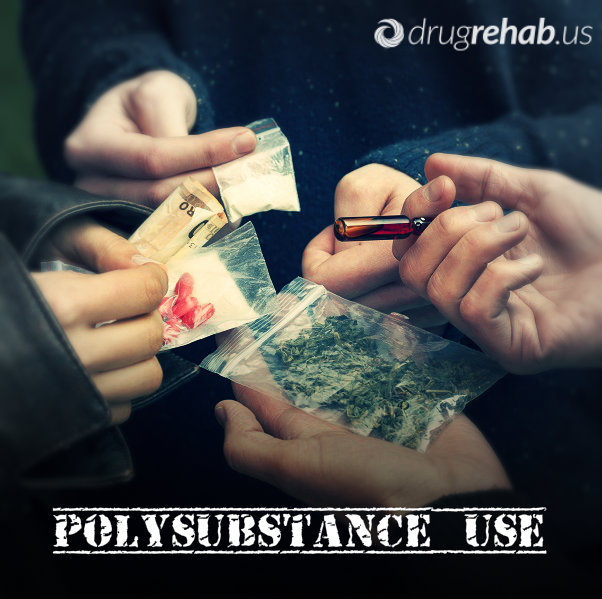 Approximately 19 million Americans over the age of 11 consume at least some amount of marijuana in a typical month, according to 2012 figures compiled through a federal project called the National Survey on Drug Use and Health.
Approximately 19 million Americans over the age of 11 consume at least some amount of marijuana in a typical month, according to 2012 figures compiled through a federal project called the National Survey on Drug Use and Health.
All told, users of this cannabis product account for close to 80 percent of the nation’s entire population of illicit/illegal drug users. Roughly 63 percent of the nation’s illicit/illegal drug consumers only use marijuana, while the remainder of marijuana users also consume at least one other drug.
Teenagers over the age of 15 and young adults under the age of 26 have the highest monthly rates for marijuana intake. Approximately 14 percent of 16- and 17-year-olds consume some quantity of the drug in the average month. The monthly rate of marijuana use rises to nearly 19 percent in older teens and younger adults between the ages of 18 and 25. Roughly 7.6 million American teens and adults qualify as daily marijuana users by consuming the drug at least 20 days a month. In addition, roughly 5.4 million American teens and adults consume marijuana at least 300 days a year.
Polysubstance Use
Marijuana users who also consume other drugs participate in a form of substance use commonly known as polydrug or polysubstance use. As a rule, polydrug users have heightened chances of experiencing the damaging effects associated with the substances they consume.
Damaging Effects Of Polysubstance Use
These effects include:
- overdoses
- serious changes in cardiovascular (heart and blood vessel) function
- serious changes in lung function
- significant body temperature alterations
Serious changes in mental function can also occur that may qualify as symptoms of mental illnesses such as:
- major depression
- anxiety disorders
- psychosis-related disorders
Examples of additional substances sometimes consumed by marijuana users include the stimulant cocaine, methamphetamine or other stimulants, opioid drugs or medications, inhalants, sedative-hypnotic medications (i.e., tranquilizers and sleep medications) and hallucinogens.
Drugs Linked To Marijuana Use
In the study published in the Journal of Addictive Diseases, researchers from Brown University, Brown-affiliated Butler Hospital and the Veterans Administration used an examination of 1,075 people transitioning from adolescence to adulthood to determine the forms of polysubstance use most likely to occur among marijuana users in their late teens or very early 20s.
During interviews with the researchers, each of these study participants submitted information on his or level of involvement in marijuana use, as well as his or her level of involvement in the use of cocaine, stimulants other than cocaine, opioid drugs or medications, sedative-hypnotic medications, hallucinogens and/or inhalants. T
he researchers also gathered background information on such factors as each participant’s demographic profile (age, racial/ethnic ancestry, gender, etc.) and level of involvement in binge drinking.
Some of the young people enrolled in the study qualified as daily marijuana users, while others did not. After completing their analysis, the researchers concluded that daily consumers of the drug are substantially more likely than other people in the same age range to consume:
- cocaine
- non-cocaine stimulants
- inhalants
- opioid drugs and medications
- nicotine/tobacco
This finding holds true even when considerations such as demographic profile and level of binge drinking involvement are taken into account.
Based on their findings, the study’s authors concluded that daily marijuana users are unusually likely to participate in polysubstance use during the transition between adolescence and early adulthood. They also concluded that these daily consumers of the drug may have increased chances of experiencing notably negative health outcomes.
It’s important to note that, even in the absence of polysubstance use, daily marijuana use has clearly negative health impacts. For example, figures compiled by the National Institute on Drug Abuse indicate that roughly one-quarter to one-half of all daily consumers of the drug will eventually merit a diagnosis of cannabis addiction (part of a larger condition called cannabis use disorder).
Do You Or Someone You Love Need Help Overcoming Marijuana Addiction?
Learn More About Marijuana Rehab Treatment – Turn A Life Around Today!
04 Dec 2014
What’s The Deal With Edible Pot?
Marijuana is often in the news these days, especially if you live in Colorado or Washington where pot is now legal for recreational use. For those of us not living in one of these two states, we are still hearing the tales of legal pot in the national news. Other states will be voting on legalization, and it’s important to hear what’s happening. Right now, edible marijuana is at the forefront. What does it mean and why is it in the news? What do you need to know about it and should you be worried?
Marijuana Edibles
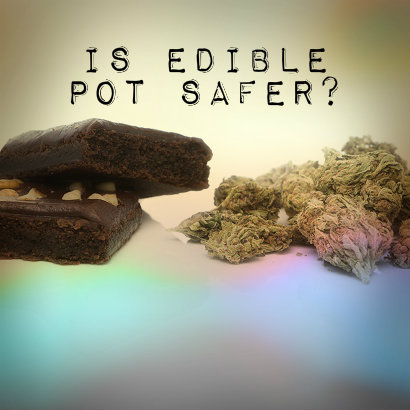 Marijuana is a drug that comes from the cannabis plant. Several parts of the plant, but especially the buds, are dried and then smoked. This is what you would typically think of when you think about marijuana use: someone smoking a joint.
Marijuana is a drug that comes from the cannabis plant. Several parts of the plant, but especially the buds, are dried and then smoked. This is what you would typically think of when you think about marijuana use: someone smoking a joint.
Smoking isn’t the only way to get high on the cannabis plant, though. The psychoactive compounds in the plant can be extracted and added to any number of foods. In fact, Colorado reports that 45 percent of legal pot sales in the state are edible products. Common foods with pot infusions include brownies, cookies, other baked goods, and candies.
Is Edible Pot Safer?
It might seem like eating cannabis-infused products would be safer than smoking a joint. Smoking is bad for your health, after all. For those inexperienced with using different types of pot products it can be difficult to understand the differences between pot edibles and smoking, but they are important. Several of these differences can make edible products more dangerous than smoking a joint.
The first difference is that the psychoactive compounds (the main one is called THC) are absorbed differently. To make you high the THC has to get into your brain. When you eat THC it goes to your liver first and is converted into a product that produces a more intense high. Inhaled THC just goes straight to the brain. If you smoke a joint you will get high sooner, but it will be less intense and last for a shorter duration. Because it takes longer for the high to begin, rookies at eating pot have made the mistake of eating too much. Famously, columnist Maureen Dowd made this mistake and spent eight hours hallucinating in her hotel room in Colorado.
Accidental Edible Marijuana Overdoses
Another difference is that dosing is much trickier with edibles. Some strains of cannabis have more THC than others, but for the most part smoking one joint is much like smoking any other. The concentrations of THC don’t vary too much. With edibles, the manufacturer can add a lot or a little concentrated THC extract. If the product isn’t labeled clearly, or at all, a user could make a terrible mistake and eat too much. Accidental edible overdoses have been devastating. Children have gotten their hands on these products and ended up in the emergency room, and even adults have had problems with them, resulting in two recent deaths.
Legal Recreational Marijuana And Edible Marijuana Regulations
As legal recreational marijuana becomes more common across the country, it is important for consumers, citizens and voters to be aware of the issues. One issue is edible marijuana products. Colorado officials are currently hashing out ways to regulate or even ban them to prevent accidents. The best way to avoid making dangerous mistakes with pot edibles is to avoid them altogether. No version of marijuana is safe. It is a mind-altering drug, and it can cause any number of health problems. Whether it is legal or not, marijuana is a drug.
11 Nov 2014
5 Facts About Veterans And Substance Abuse
Veterans Day is a time to remember and celebrate the people who have made sacrifices to serve in the military. If you have a veteran in your life, you know the toll that service can take. Mental health issues, including substance abuse, are common among men and women who have seen combat overseas. We should all recognize this struggle and be more aware of the issue. With awareness comes understanding, compassion and real change.
Facts About Veterans And Substance Abuse
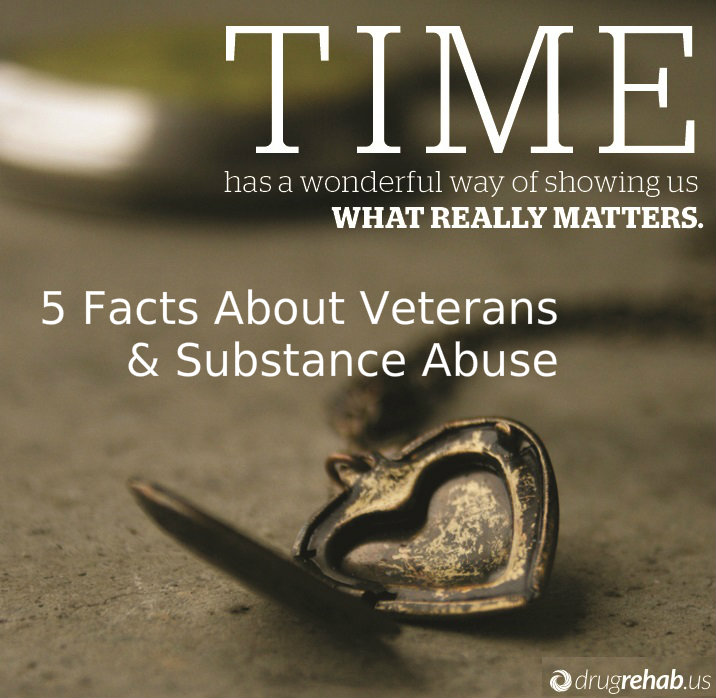 1. Prescription Abuse Among Vets On The Rise
1. Prescription Abuse Among Vets On The Rise
Use of illicit drugs by active military personnel is quite low. Compared to civilians, men and women in the military rarely use illegal drugs because of strict policies and enforcement by random drug testing.
On the other hand, prescription drug abuse is a real problem for both active duty military personnel and veterans. The rate of misuse of prescriptions increased from 2 percent in 2002 to 4 percent in 2005 and 11 percent in 2008.
2. Veterans Have A Drinking Problem
Alcohol may be legal, but it is a substance of abuse for many people and veterans are no exception. The Armed Forces Health Surveillance Center says that one in eight troops get streatment for alcohol abuse after returning from overseas deployment. While women are not immune from the problem of drinking, men are the ones who are really struggling. Twenty three percent of male veterans binge drink, compared to 14 percent of female veterans.
3. Substance Abuse And Veteran Suicides
For most of modern military history, suicide rates have been lower for troops and veterans than for civilians. Starting in 2004, though, the incidents of suicide in the military have been rising. In 2008, the rate of suicides in the military surpassed the rate among civilians. Substance abuse is often involved in cases of suicides. According to the Army Suicide Prevention Task Force, one-third of suicides included abuse of prescription drugs.
4. PTSD Is Linked to Substance Abuse
Post-traumatic stress disorder, or PTSD, is a common mental health issue for veterans. The experiences of combat haunt military personnel — some develop the flashbacks, panic attacks, nightmares and other symptoms that characterize PTSD. Many turn to drugs or alcohol as a form of self-medication. Nearly a quarter of veterans with PTSD will also develop a substance abuse problem, and one-third of those seeking treatment for substance abuse also have PTSD.
5. Treatment Is Available For Vets
If you are a veteran and you struggle with drug or alcohol use, or you care about a vet who is having a problem, know that help is available. The Department of Veterans Affairs offers several services for vets, including screening and diagnosis. This first step can even be done anonymously. The veteran can then decide to take steps to get treatment. Options for treatment are varied and include therapy, couples and family counseling, support groups, care for a dual diagnosis of mental illness and substance abuse, and medication. The VA offers residential treatment as well as outpatient care and continuing care.
Substance abuse is a common problem among veterans because of the experiences of active duty. Mental health care is crucial to these important people and they deserve to have the best treatment modern medicine can offer.
If you or someone you care about is struggling with drinking, drugs or mental illnesses like PTSD, contact the VA and find out how to get access to treatment. It could save the life of the vet you love.
25 Sep 2014
How Is Substance Abuse Childish Behavior?
It might seem like an odd way to think about substance abuse and addiction, but the behaviors are childish and immature. No one can claim ignorance of the negative consequences of drug or alcohol abuse, yet people do it anyway. Being impulsive and lacking self-discipline are traits that are common in children and which we are expected to outgrow. So why do drug abusers act like children and how can they learn to grow up?
Impulsivity, Self-Control And Drug Abuse
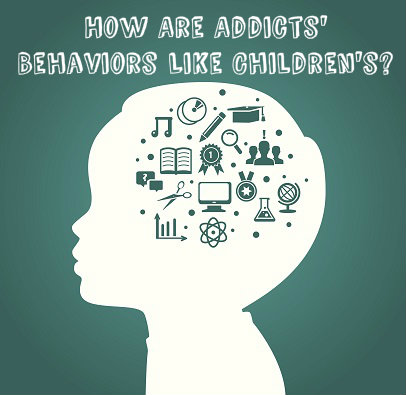 Controlling impulses is something we all have to learn as human beings. We are not born with self-discipline. As young children we reach for what we want. As we grow older we learn to control our impulses. Those who fail to learn the skill, for whatever reason, are not as successful. For instance, a study found that teenagers that exhibited strong self-control were more likely to be positive, achieve goals and be self-motivated and successful in academics than their impulsive peers.
Controlling impulses is something we all have to learn as human beings. We are not born with self-discipline. As young children we reach for what we want. As we grow older we learn to control our impulses. Those who fail to learn the skill, for whatever reason, are not as successful. For instance, a study found that teenagers that exhibited strong self-control were more likely to be positive, achieve goals and be self-motivated and successful in academics than their impulsive peers.
Research has also found that being impulsive and lacking self-control are traits that may be inherent in some people. We also know that having these traits makes some people more susceptible to drug abuse and addiction. If you can’t control your impulses, and if you lack the self-control to turn down a pleasurable drug because of negative consequences, you are more likely to be an addict.
Growing Up And Learning Self-Control
Just because addicts act more childishly and are more impulsive than non-addicted adults, does not mean they cannot learn to control themselves and be more emotionally mature. One powerful, yet simple, tool is distraction. People who have good self-control are good at distracting themselves. If something pleasurable is set before you, but you know you should resist, distract yourself. Think about other things or engage in an alternative activity—whatever you do, make the distraction positive. You will be more likely to control your impulse if you can distract yourself with something that is pleasurable and good for you.
Another good tool that emotionally mature adults use is stress-management. If you are stressed out, you put yourself in a negative cycle of bad behaviors and poor health. When stressed, you are more likely to be impulsive. Meditation, exercise, adequate sleep, good nutrition and mindfulness all help to manage stress and help you to make better choices, not ones based on impulses. The better you feel, the better able you will be to make good choices.
People with good self-control are good planners. Thinking about the future and planning for situations in which your self-control may be tested can help you to resist your impulses. For instance, if you are trying to cut back on drinking, consider all the possible situations you may face. If you’re going to a party, make a plan for how many drinks you will have and how you will resist the impulse to have more. Plan out how you will handle people who urge you to keep drinking. Making these plans can help lead you to successfully control your impulses.
Finally, maintain a positive attitude. Some people believe that willpower is a finite resource, but this isn’t true. You may be faced with a number of temptations, but you can learn through practice and experiences to control your impulses. You are not a child anymore, and although you still act like one at times, you do have the power within you to grow up and act like a mature adult with self-control.
Overdose deaths caused by heroin and other opioid drugs are on the rise across the U.S. Opioids include illegal heroin, but also many powerful and addictive prescription painkillers. All of these drugs are easy to abuse, get addicted to and overdose and die from using. An injection with a drug called Naloxone can reverse such an overdose and prevent a tragic death. If you have someone in your life addicted to or abusing opioids, you need to know about this life-saving overdose antidote.
When Naloxone Can Be Used
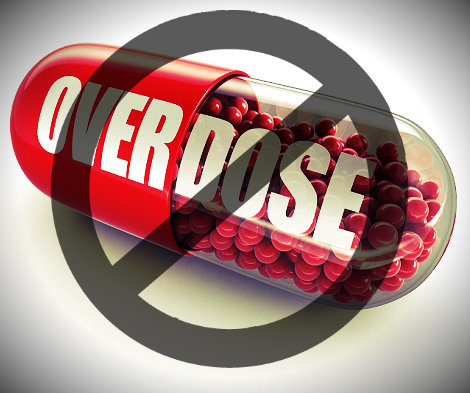 Naloxone is a drug that is related to opioids and that is capable of reversing the effects of certain opioids on the body. It can be used after surgery to reverse the effects of opioids given for pain and sedation. It can be given to infants born with a dependency on opioids. A mother’s drug use causes this and the Naloxone helps to relieve the infant’s withdrawal symptoms. For someone overdosing on an opioid, Naloxone can be injected with a needle or with an auto-injector, called Evzio. The auto-injector is similar to devices used for severe allergic reactions and can be used by anyone without medical training.
Naloxone is a drug that is related to opioids and that is capable of reversing the effects of certain opioids on the body. It can be used after surgery to reverse the effects of opioids given for pain and sedation. It can be given to infants born with a dependency on opioids. A mother’s drug use causes this and the Naloxone helps to relieve the infant’s withdrawal symptoms. For someone overdosing on an opioid, Naloxone can be injected with a needle or with an auto-injector, called Evzio. The auto-injector is similar to devices used for severe allergic reactions and can be used by anyone without medical training.
Naloxone Saves Lives
Naloxone has been successful in saving lives. The Centers for Disease Control and Prevention (CDC) reports that thousands of doses of Naloxone have been distributed in community groups dedicated to preventing overdose deaths. Because of this distribution, more than 10,000 people have been saved from life-threatening overdoses. Community groups, first responders and law enforcement officers are being given injectors in greater numbers to administer life-saving Naloxone.
Can Anyone Get Naloxone?
The important question for anyone who cares about an opioid drug abuser is about access to the overdose antidote. Emergency responders and police have them, and injection devices are easy to use. Can anyone get access to a Naloxone injector? Should you carry one with you to save your loved one’s life in the event of an unintentional overdose? Many advocates for greater access to the overdose antidote say yes.
Community programs are already working toward getting more Naloxone injectors into the hands of those who need it. It is a prescription medication, but it can be prescribed to anyone who is at risk of having an overdose. The reach of such community programs, however, is currently limited. These programs are run mostly through needle exchange programs and target inner-city heroin addicts. More access is needed in greater areas and for people abusing prescription painkillers, not just heroin. Support for expanding access is high, but funds are low.
To get a Naloxone injector for yourself or a loved one, you need to either find a community program near you that will distribute it to those in need, or find a physician willing to write you a prescription for one. If you don’t know where to start, speak to your primary care doctor for more information or referrals. Also keep an eye out for non-prescription Naloxone. Because of the great need for this life-saving drug, the Food and Drug Administration (FDA) is considering the development of an over-the-counter alternative.
Opioid addiction is a terrible disease. It can hook anyone and it can do so quickly. Getting over an addiction to an opioid is extremely challenging. Anyone abusing these drugs is at risk for an overdose. Dying from an overdose can even occur with the first use of one of these drugs. If you know someone who abuses any kind of opioid, the overdose antidote should be on your radar. Look into the possibility of getting access to the injector. It could save the life of someone you love.
08 Sep 2014
Straight-A Students And Substance Abuse
Countless parents have had this internal argument: My kid is a good kid. She gets all As at school. She’s an athlete. She couldn’t possibly be using drugs or drinking, right? Unfortunately, some of those parents are wrong. Good kids abuse substances too. Teenage experimentation with drinking or drugs doesn’t always look like the stereotypical burnout. All parents should be aware that substance abuse is everywhere and know the more subtle signs and symptoms.
Teens And Substance Abuse
The good news about teens abusing drugs and alcohol is that the trend is moving downward. Fewer teens drink, smoke, or use most illegal drugs than did a few years ago. Abuse of marijuana has been rising as the perceived risk of this drug goes down. Prescription drug abuse still makes up a significant part of teen substance abuse. Although use rates are declining for most drugs, many teens are still abusing substances and suffering the consequences. Nearly one-quarter of all high school seniors report having used marijuana in the last month, while 15 percent used a prescription drug non-medically.
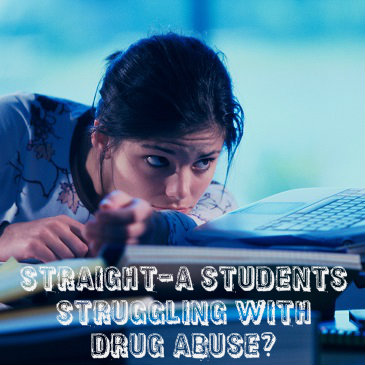 Numbers don’t lie. A lot of teens abuse substances. If you think that your teen is not using simply because she is a straight-A student or because she is popular and on sports teams, or because she is involved in several extracurricular activities, think again. No teen is exempt from the pressures that can lead to experimentation with drugs or alcohol, and many are good at hiding their substance abuse, especially from parents. Here are some of the more subtle signs to look out for in your teen:
Numbers don’t lie. A lot of teens abuse substances. If you think that your teen is not using simply because she is a straight-A student or because she is popular and on sports teams, or because she is involved in several extracurricular activities, think again. No teen is exempt from the pressures that can lead to experimentation with drugs or alcohol, and many are good at hiding their substance abuse, especially from parents. Here are some of the more subtle signs to look out for in your teen:
Teen Substance Abuse Signs
- Changes In Sleep Patterns: Drug and alcohol use impacts sleep in a number of ways. It can make someone sleep more or can lead to insomnia. Look for signs that your teen is staying up later than normal, sleeping in later than usual, or napping more frequently. Also be aware of any signs that she is often tired, such as yawning, bags under her eyes or sleeping in class.
- Missing Important Activities: If your teen is involved in a lot of activities, she may be able to drink or use drugs for a little while before it starts to impact them. Eventually, though, she will start to slide. It may be just a little bit at first. She might be late to one or two events when normally she is punctual. Maybe she decides to give up one of her less important activities.
- Physical Signs: Some of the effects of drug use can’t be covered up. Look for persistent coughing, bloodshot eyes, dilated or pinpoint pupils, an increased appetite, unsteadiness, unusually bad breath, unfamiliar smells or lethargy.
- Secrecy About Money: If your child has always been open about her money and what she spends it on, be concerned if she suddenly becomes secretive. If she doesn’t want you to see her bank account information or go through her purse, be aware that something may be up.
Good Students And Prescription Drugs
You may be right when you say that your straight-A teen would never drink, smoke pot or use street drugs to get high. What many parents of good students don’t realize is that certain prescriptions are abused for academic reasons. Prescription medications for ADHD are popular with ambitious students. These drugs are stimulants and high school and college students are abusing them in record numbers to stay awake and alert for studying and writing papers. Subtle signs of drug abuse in your teen may indicate she is using stimulants because of the pressure she feels to get good grades.
No matter how good your teen is or how successful she is in school, you cannot guarantee that she will not experiment with drugs or alcohol. Always be aware of the potential for abuse and spend time talking with your teen. Make sure she knows she can open up to you and you will be more likely to catch any problems before they go too far.


